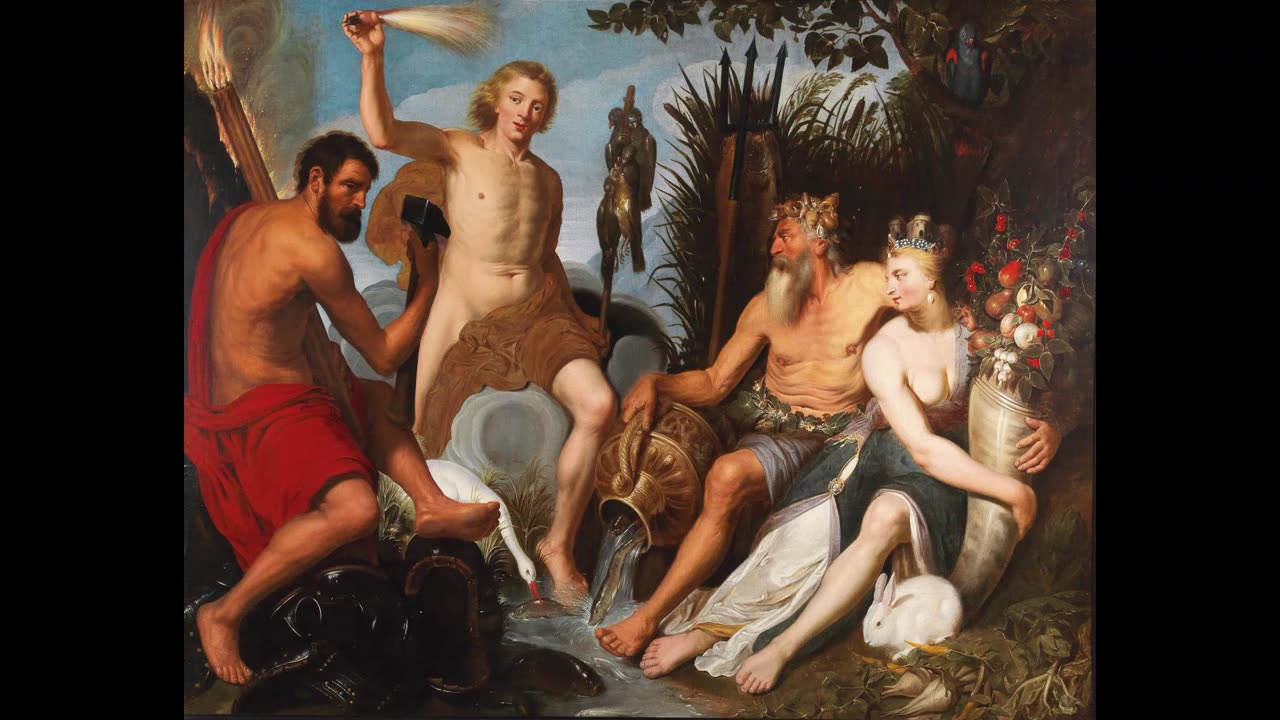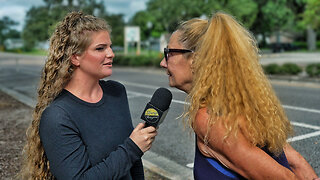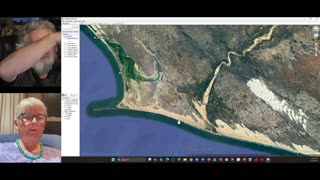Premium Only Content

Four Elements
Purdy once referred to his style, half jokingly, half seriously, as Romanticism as imagined by the Surrealist painter Salvador Dali.
The Four Elements spins off from the ancient and remarkably wide-spread idea that the phenomenal world is composed of combinations of four basic elements; Fire, Air, Water and Earth. This conceptual model is found in the pre-Socratic philosophers of Ancient Greece but also in the Vedic traditions of India and in Chinese thought.
The work is in four movements, each corresponding to one of the four elements. It is scored for String Quartet, Alto Flute, Oboe, French Horn, Contrabass Trombone, Grand Piano, Amplified Harp and Marimba. It is tuned to the Pythagorean temperament.
Four Elements is not a PolyStrophic work, rather it has much more of an improvisational, stream-of-consciousness feel. In keeping with that idea, the modes and harmonies are extremely free. The work is a form of “improvised notation” rather than insstrumental improvisation. Purdy essentially let his imagination run wild, working only within a very broadly impressionistic sense of the subject matter. It features some of his most pointillistic writing combined with highly lyrical and even sweet passages.
Fire - Conflagrazione, brace e fascino
(Conflagration, embers and fascination)
• Symbol of love, desire, anger, power, assertiveness, and energy.
Fire is considered to be the first element to be created on earth. Fire is predominantly associated with the sun, and is a warm and dry element. It gives off light, which protects all living creatures from the shadows of night. Fire is transformative, and when merged with other elements, it can change and grow. For instance, when fire encounters air, it grows bigger, and burns brighter.
The movement opens with a depiction of conflagration, the angry, assertive and dangerous aspect of fire, alternating with the element’s association with love, desire and fire’s perennial fascination.
II Air - Brezze, raffiche e vortici
(Breezes, gusts and eddies)
• Symbol of knowledge, perception, communication, creativity, and strategy.
Air is the element of life itself as all living creatures, both plants and animals, require air to live and thrive. Air is warm, moist, and provides the mind and body with energy. The air element can be found all around us, but its most visible manifestation is through breezes or winds.
This movement depicts the gentle, amorphous and delicate aspect of air, with brief references to its force and expansiveness.
III – Water Ruscelli balbettanti, piscine e profondità oceaniche
(Babbling brooks, pools and profound oceans)
• Symbol of rebirth, healing, fertility, change, dreaming, clarity, intuition.
Water is the most soothing and calming of the four elements. It’s cool and wet nature allows it to appease the mind and body. The water element can be found in oceans, seas, lakes, rivers, and springs. Life on earth would not be possible without water, and every living creature from the smallest microorganism to the largest mammal depends on it. The flowing and transformative nature of water makes it a cleanser and purifier.
This movement evinces a changeability similar to the previous movement but with a greater density and solidity, in keeping with the heavier, literally fluid, nature of water, as opposed to the gaseous nature of air. The primary allusions are to quick running streams, still sparkling pools and the chthonic depths of the ocean.
IV – Earth - Maestoso, austero, ma sereno
(Majestic, austere, yet serene)
• Symbol of stability, nourishment, security, fertility, health, and home.
Earth is the most materially grounded element. It’s cool and dry nature, provides a comfortable living space for all plants and animals. The earth element can be found in fields, hills, mountains, and plains and is home to all living beings. Survival would be impossible without earth. Earth is a rich and fertile element providing energy and sustenance to all living creatures.
This movement, the shortest in the work, begins with an evocation of both the force and solidity of earth, particularly in the form of mountains, and also the life sustaining beauty of it.
The movement concludes with a “jump shot”, to use a term from film, depicting an ancient pagan, ritualistic dance, imagined as being performed at midsummer in the shadow of Stonehenge.
Cover art by Artus Wolffort, The Four Elements, before 1641
Artus Wolffort, Artus Wolffaert or Artus Wolffaerts[1] (1581–1641) was a Flemish painter known mainly for his history paintings depicting religious and mythological scenes.
Closing title: Seventeenth century alchemical emblem showing the four Classical elements in the corners of the image, alongside the tria prima on the central triangle.
-
 LIVE
LIVE
Wendy Bell Radio
5 hours agoPet Talk With The Pet Doc
1,263 watching -
![Mr & Mrs X - [DS] Trafficking Empire – The Pedo Network Island, The Cover-Up: Part 2 - Ep 6](https://1a-1791.com/video/fww1/f8/s8/1/y/p/x/f/ypxfz.0kob-small-Mr-and-Mrs-X-DS-Trafficking.jpg) LIVE
LIVE
X22 Report
16 hours agoMr & Mrs X - [DS] Trafficking Empire – The Pedo Network Island, The Cover-Up: Part 2 - Ep 6
614 watching -
 27:15
27:15
Liberty Hangout
2 days agoThe Most DELUSIONAL Democrats on Earth!
5.56K107 -
 13:13
13:13
Mrgunsngear
16 hours ago $1.95 earnedStreamlight TLR-1 HP Review: Can It Dethrone Surefire?
13.7K9 -
 38:41
38:41
JohnXSantos
22 hours agoHow To Start A CLOTHING BRAND on a BUDGET! Step X Step (2025)
41 -
 1:26:34
1:26:34
Man in America
18 hours agoExposing the Cover-Up That Could Collapse Big Medicine: Parasites
64.8K59 -
 30:57
30:57
Her Patriot Voice
15 hours ago $13.09 earnedDemocrats More Unhinged Than EVER Before!
86K126 -
 29:13
29:13
Clownfish TV
23 hours agoGen Z are Becoming the Boomers?! | Clownfish TV
9.25K35 -
 1:48:31
1:48:31
Squaring The Circle, A Randall Carlson Podcast
18 hours agoMEGA Tsunamis and the formation of our World ft. Dr. Dallas Abbot
22.8K5 -
 29:26
29:26
Advanced Level Diagnostics
2 days ago2019 Chevy Express - No Crank, Relay Clicking! Diag & Fix!
3